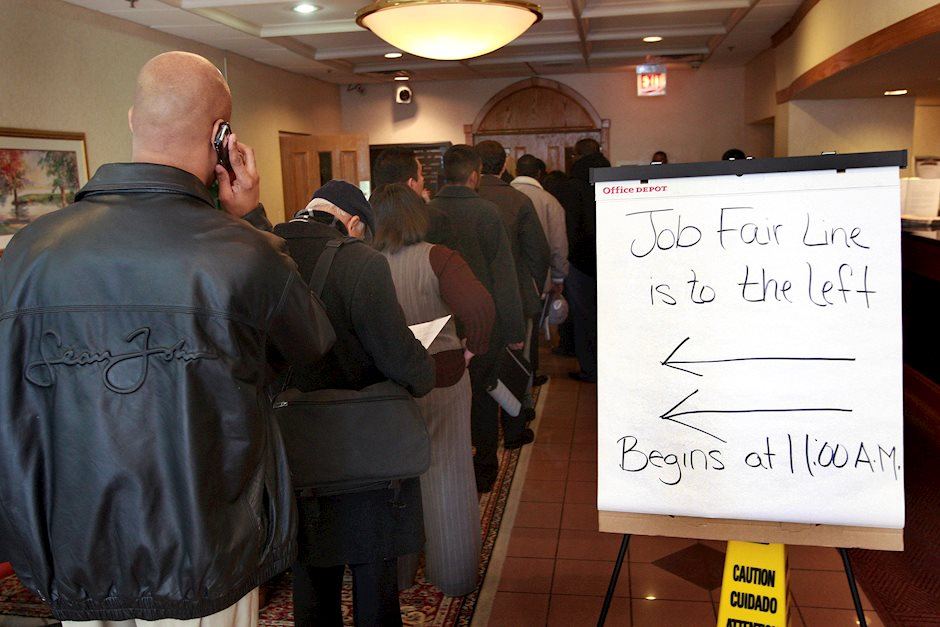US April Nonfarm Payrolls Preview: Leading indicators point to another strong NFP
- US economy is expected to add nearly 1 million jobs in April.
- Wage inflation will be one of the key elements of the jobs report.
- USD is likely to gather strength against its rivals on an upbeat NFP reading.

The US Bureau of Labor Statistics is expected to announce an increase of 978,000 in Nonfarm Payrolls (NFP) in April following March’s impressive print of 916,000. The Unemployment Rate is seen edging lower to 5.8% from 6% with the Labor Force Participation Rate, which stood at 61.5% in March, likely improving as well on the back of easing coronavirus-related restrictions.
Earlier in the week, the monthly report published by the Automatic Data Processing (ADP) Research Institute revealed that employment in the US private sector increased by 742,000 in April. Commenting on the data, “service providers have the most to gain as the economy reopens, recovers and resumes normal activities and are leading job growth in April," said ADP Chief Economist Nela Richardson. Reflecting the same sentiment, the Employment Index of the ISM’s Services PMI report improved to 58.8 from 57.2.
Additionally, the Initial Jobless Claims fell for five straight weeks and touched the lowest level since the beginning of the pandemic at 553,000 in the week ending April 24, reaffirming the upbeat labor market outlook.
Eyes on wage inflation amid reopening
On a negative note, the Employment Index of the ISM’s Manufacturing PMI report fell to 55.1 from 59.6 in March. Similarly, the IHS Markit in its Manufacturing PMI report said that manufacturers were having a difficult time finding low-wage workers with US stimulus checks incentivising people to stay at home rather than returning to the labor force.
One key detail of the US jobs report will be the wage inflation, as measured by the Average Hourly Earnings. In March, wage inflation was down 0.1% on a monthly basis and is now expected to increase by 0.1% in April. A higher-than-anticipated reading could trigger a market reaction in the US Treasury bond yields. However, the benchmark 10-year US T-bond yield lost nearly 4% in the first half of the week despite the fact that the ISM reports underlined the increasing price pressures, suggesting that a possible reaction in yields could remain short-lived. Meanwhile, the US Dollar Index struggled to build on last Friday’s impressive upsurge and spent the majority of the week fluctuating in a relatively tight range above 91.00.
Several FOMC policymakers, including Chairman Jerome Powell, acknowledged that the job market is recovering at a stronger pace than expected but reiterated that significant slack remains in the economy.
“It seems unlikely that we would see a persistent rise in inflation while there is still significant slack in labor market,” Powell said while speaking at a press conference following the FOMC’s decision to leave policy setting unchanged. “It would take time to move inflation expectations up, I would expect that to come with a strong labor market,” the chairman added.
Conclusion
To summarize, leading indicators, such as the PMI reports and the weekly Initial Jobless Claims data, point to yet another impressive NFP reading in April, which shouldn’t come as a big surprise. Nevertheless, investors could lean toward the greenback if the data confirms the view that the US economy is likely to outperform its major rivals in the remainder of the year. On the other hand, a disappointing print is likely to limit the USD’s gains.
In that sense, EUR/USD could be the pair to watch due to the fact that the European economy is taking its time to regain its growth momentum.
On the daily chart, EUR/USD seems to have gone into a consolidation phase after breaking below the ascending trend line coming from early April. In the meantime, the Relative Strength Index (RSI) indicator is moving sideways a little above 50, suggesting that sellers remain reluctant to enter the market.
Key support for the pair seems to have formed at 1.2000 (psychological level, Fibonacci 38.2% retracement of April rally). With a daily close below that level, EUR/USD could target the 200-day SMA at 1.1950 and 1.1930 (Fibonacci 50% retracement). On the flip side, a weekly close above 1.2050 (Fibonacci 23.6% retracement, 100-day SMA) could fuel another leg up toward the two-month high the pair set at 1.2150 on April 29.
Premium
You have reached your limit of 3 free articles for this month.
Start your subscription and get access to all our original articles.
Author

Eren Sengezer
FXStreet
As an economist at heart, Eren Sengezer specializes in the assessment of the short-term and long-term impacts of macroeconomic data, central bank policies and political developments on financial assets.




















